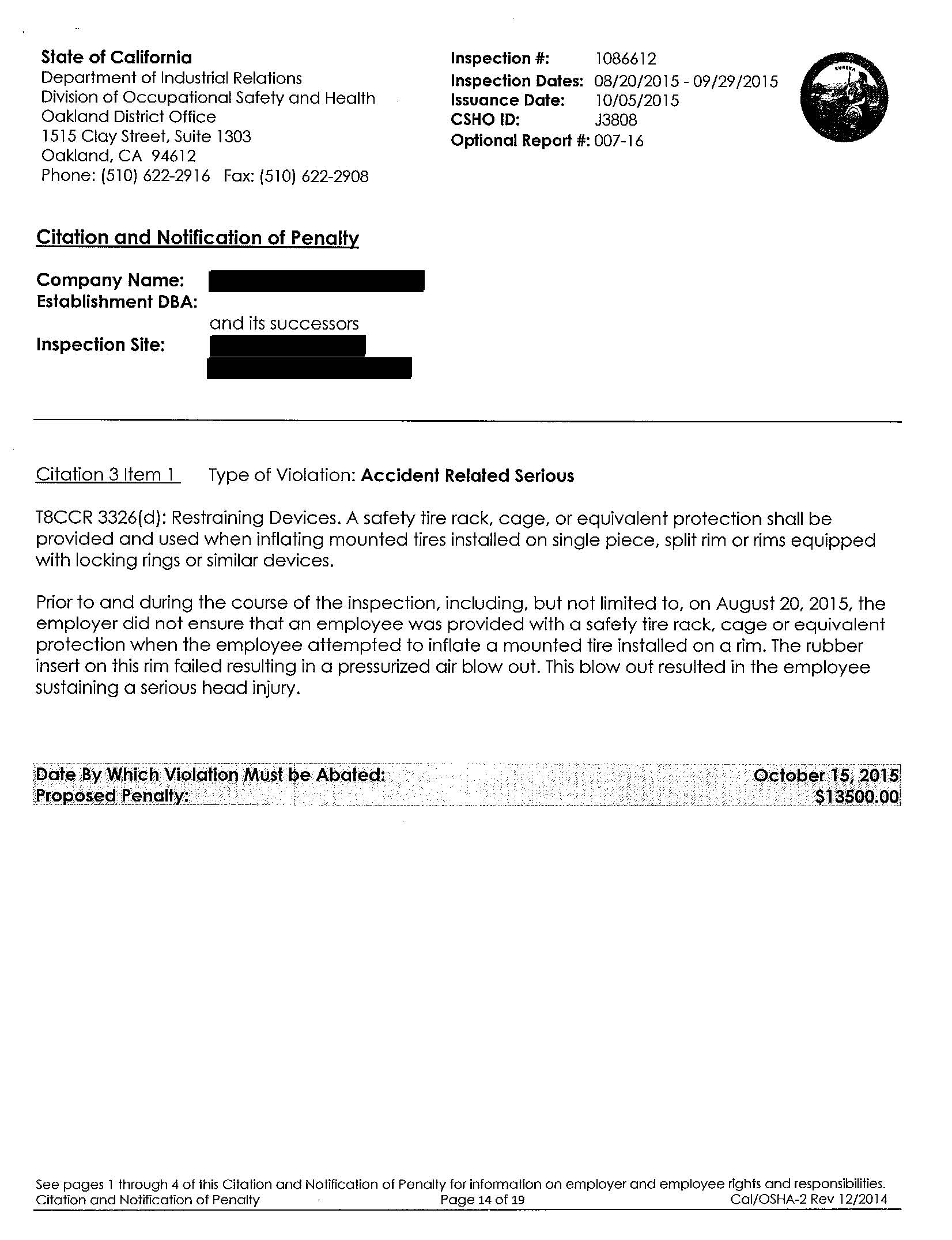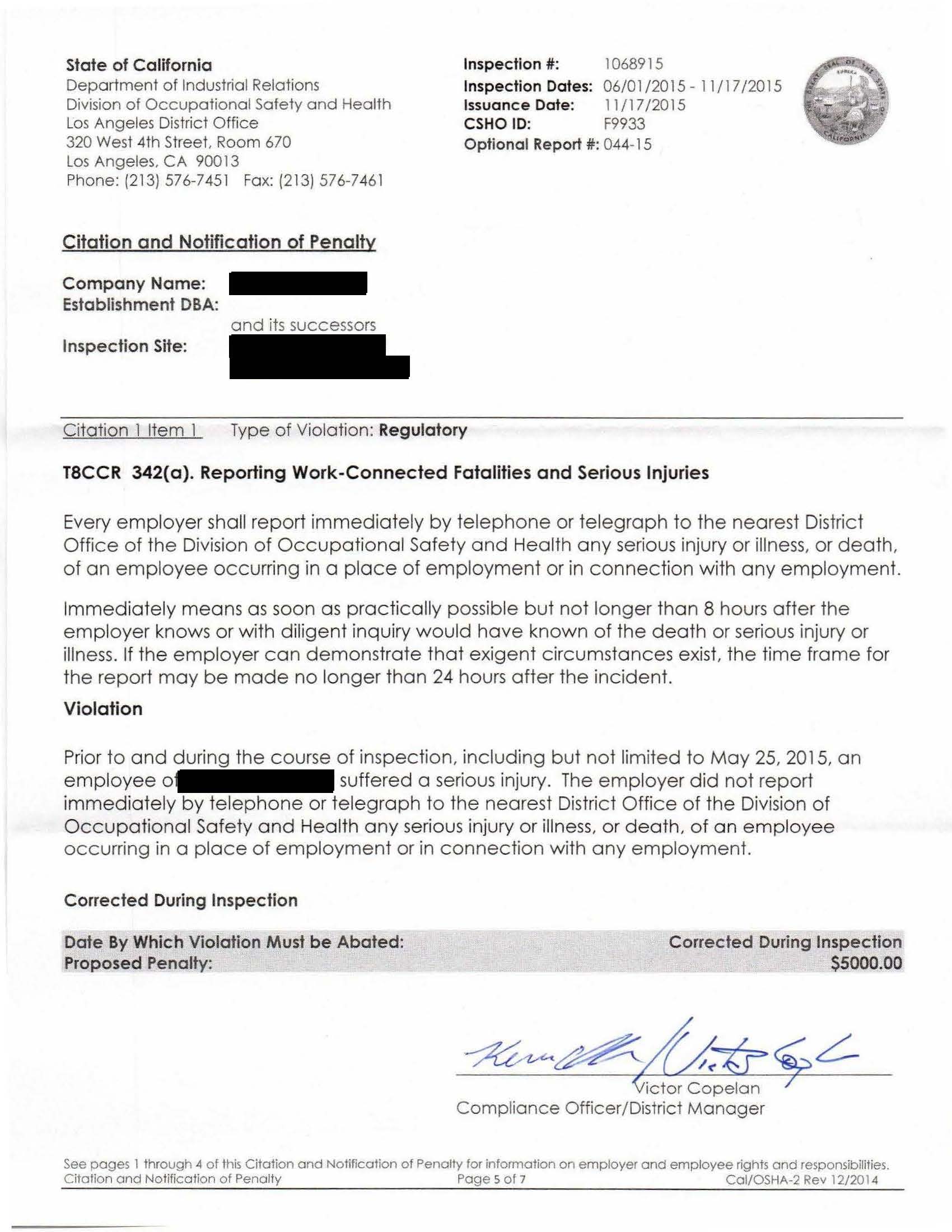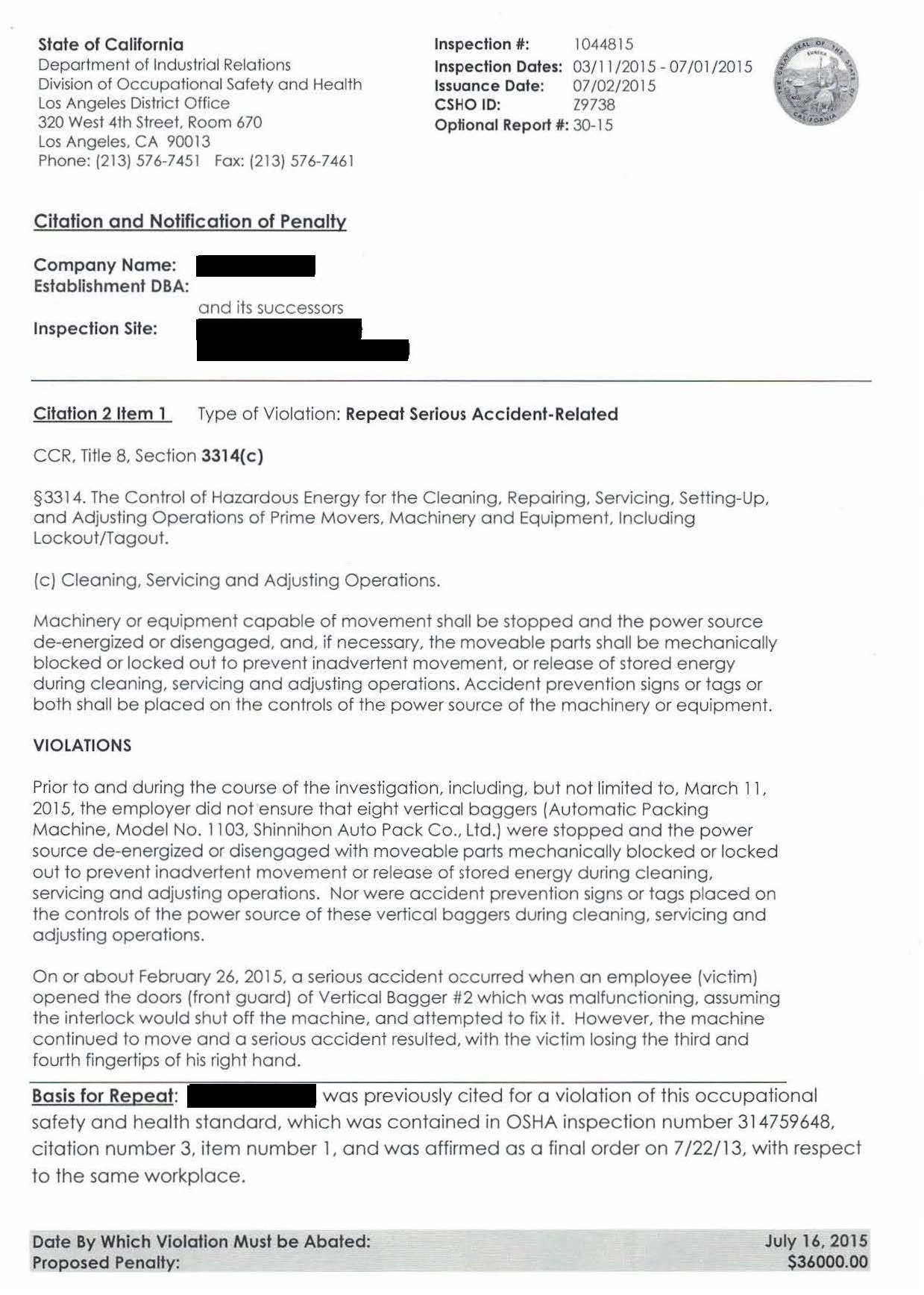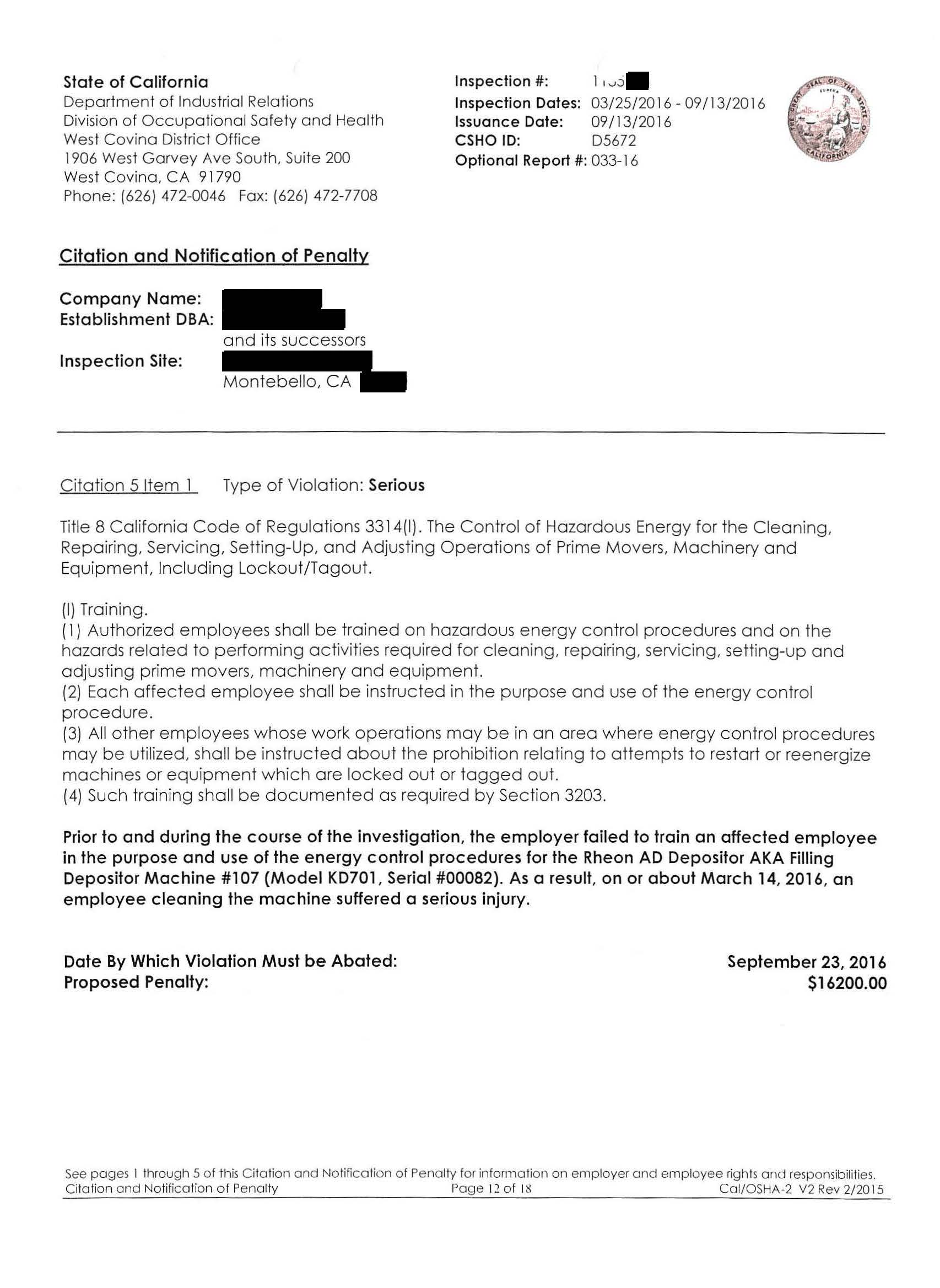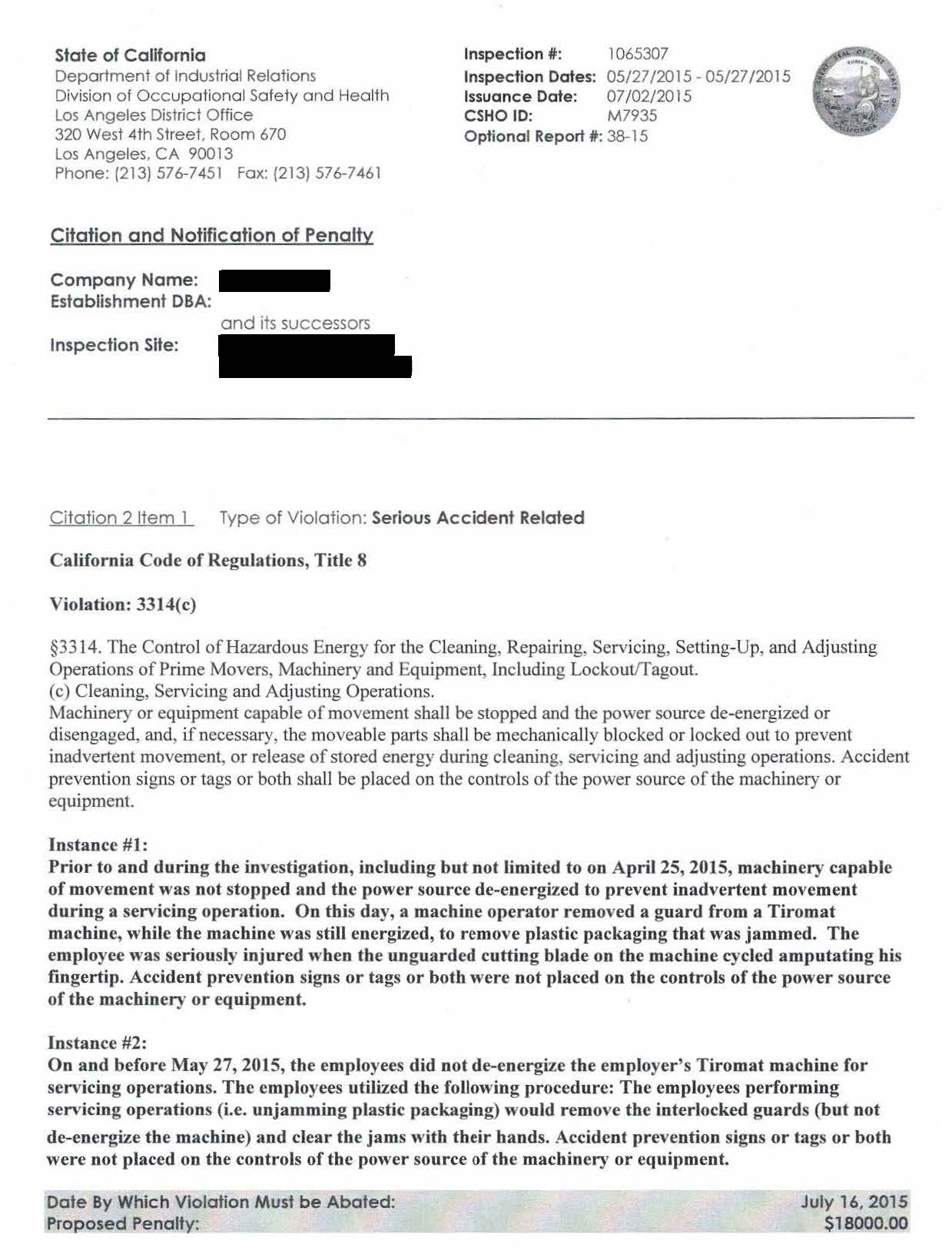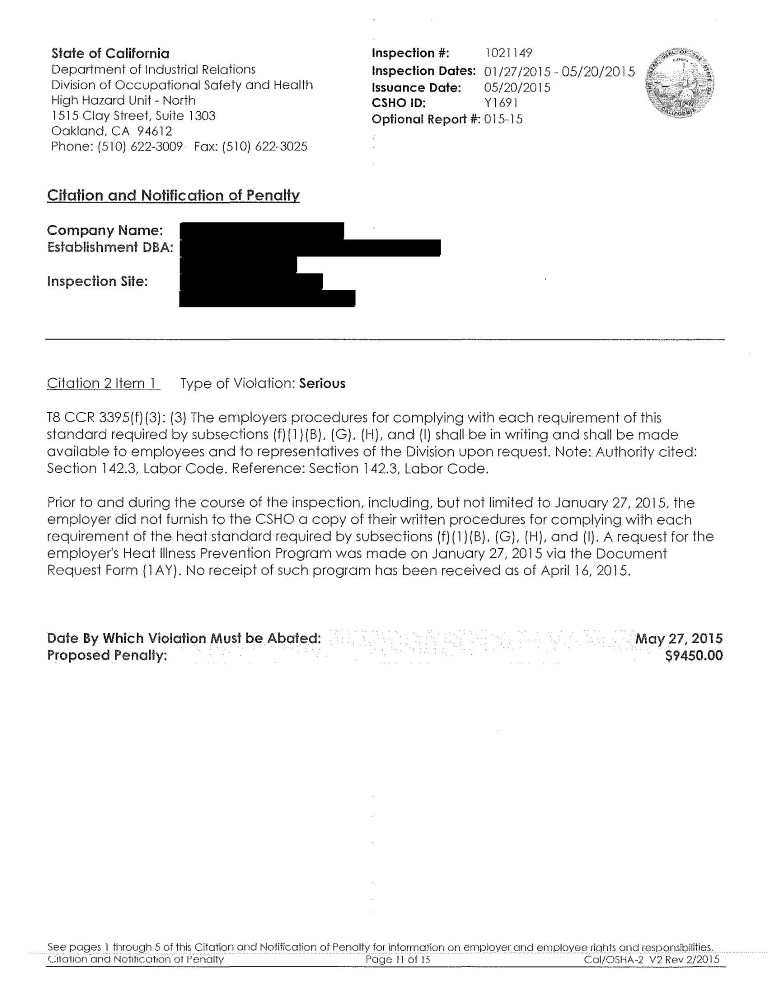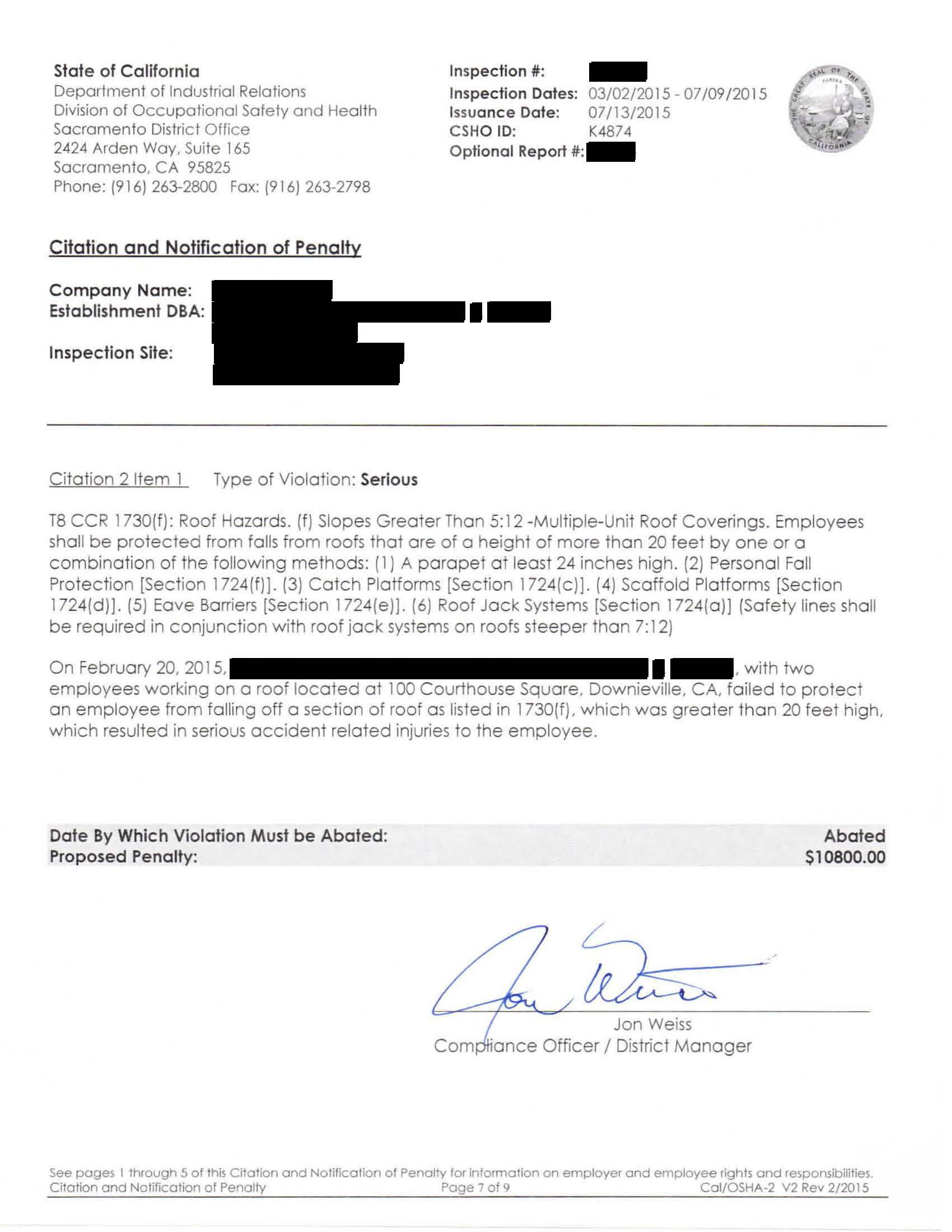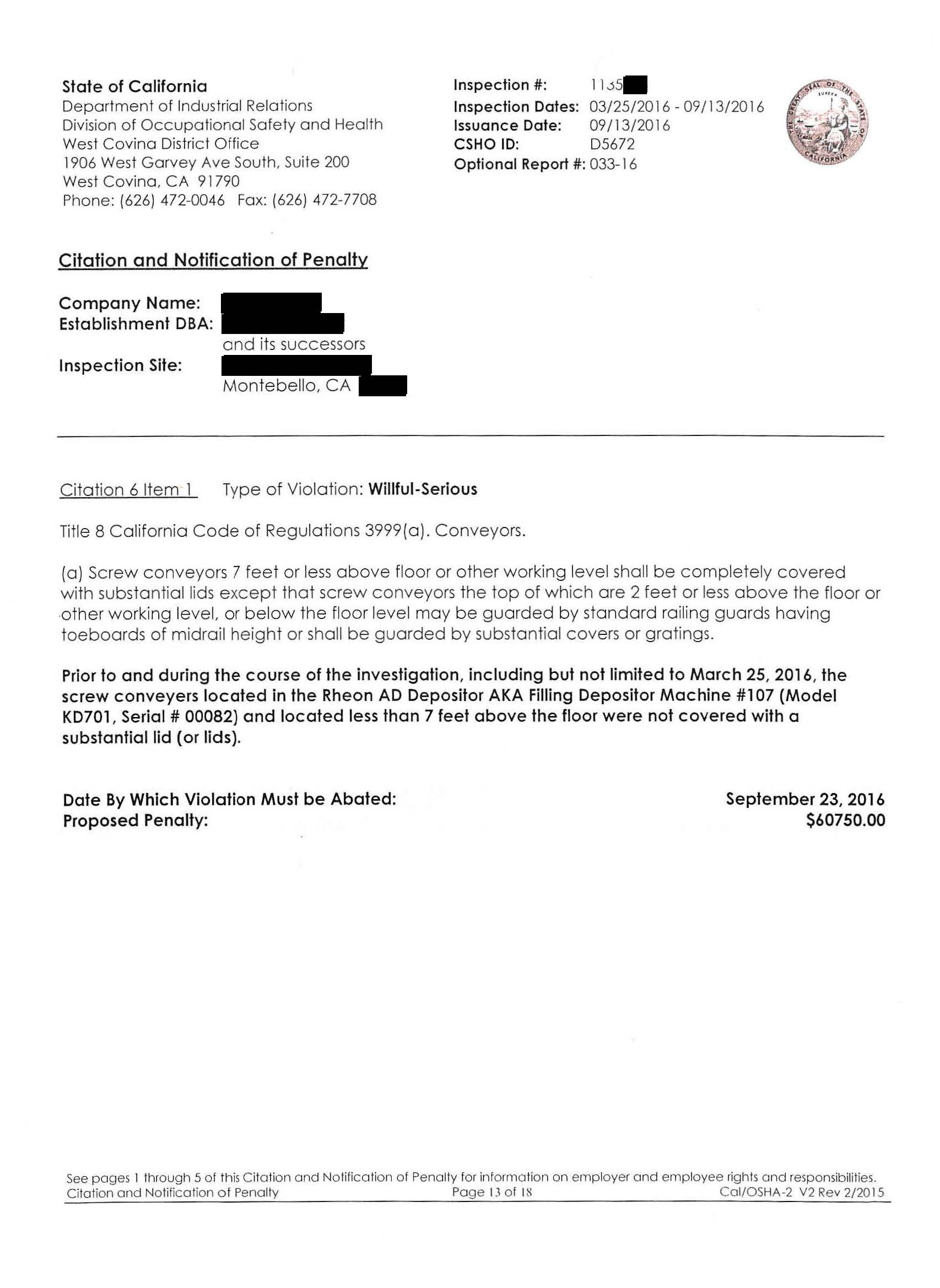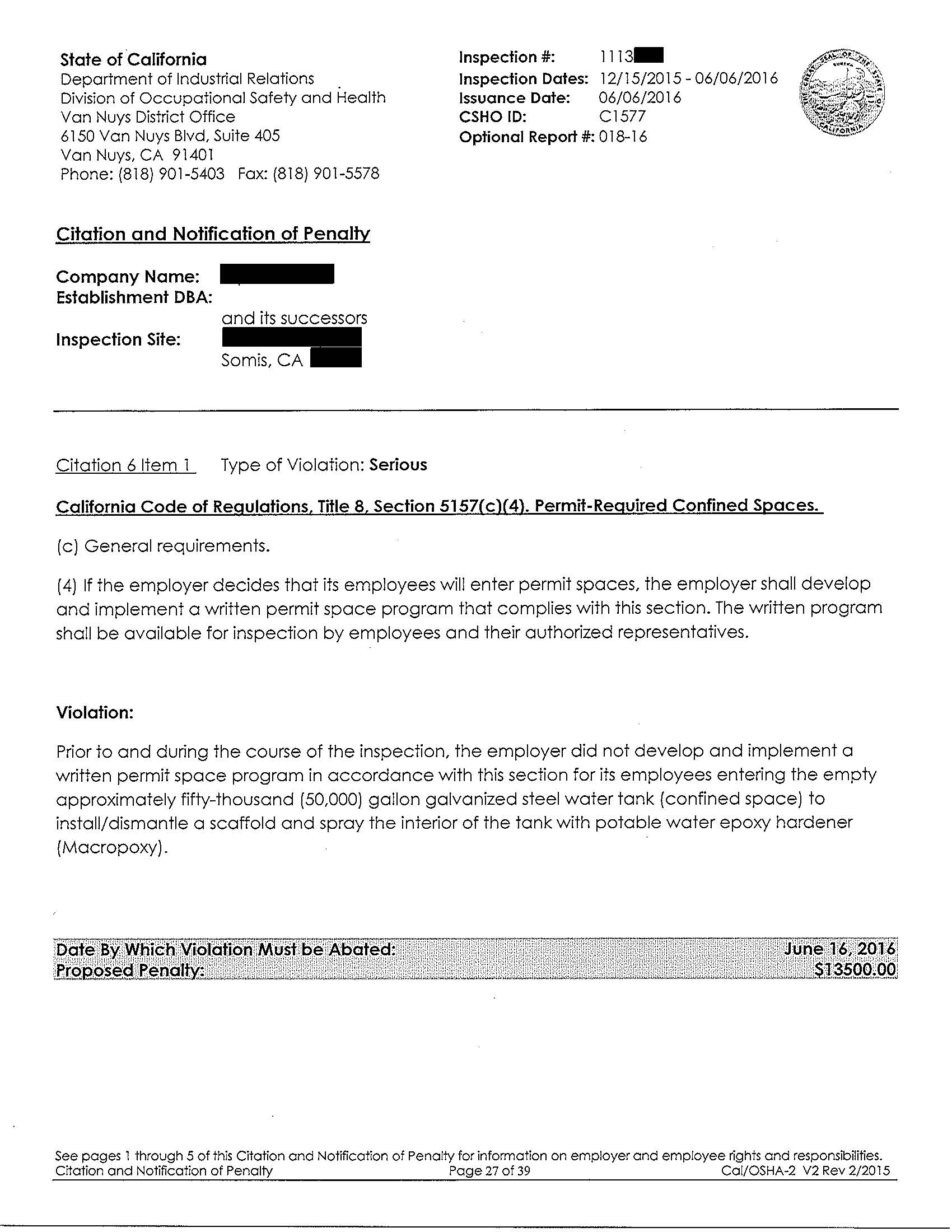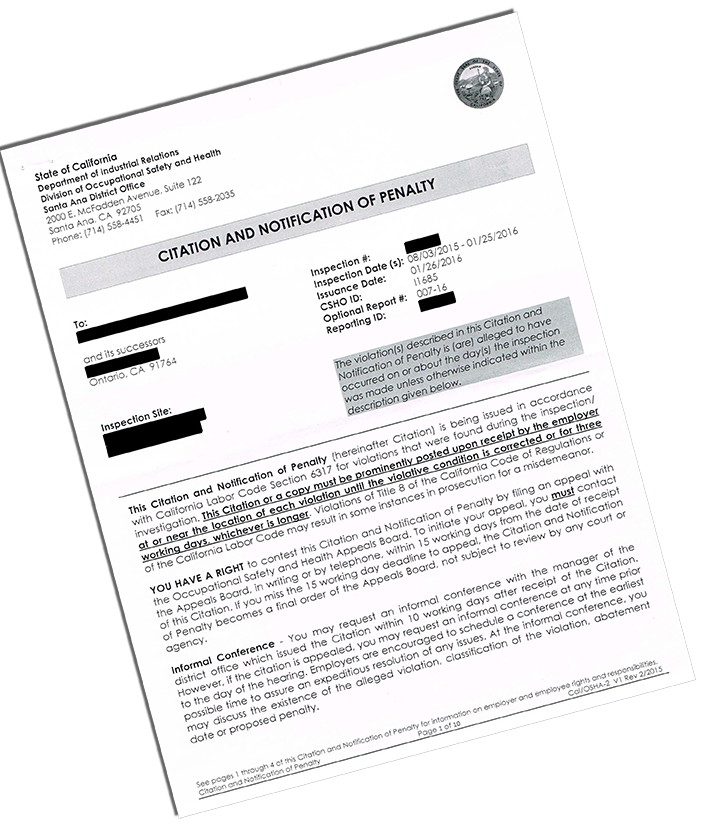
OSHA Fines Can Be Appealed
An OSHA citation most often results in OSHA fines. It is written for a violation that affects the safety and/or health of employees. The types of OSHA fines vary:
Any alleged violation observed during an inspection will be classified as either “serious,” “general,” or “regulatory.” Depending on the circumstances, any of these violations may carry the additional designation of “repeat” or “willful.”
Classification Violations that may result in OSHA Fines
General violation – one that does not fit the definition of “serious,” but does affect the safety and health of employees.
Regulatory violation – one that pertains to permits, posting, recordkeeping, or reporting requirements as established by OSHA regulations. Examples of violations include such things as:
- failure to keep required record
- failure to report work-related CAL OSHA notice
- failure to allow employees to exercis rights ro observe monitoring or measuring
- failure to report the use of a carinogen
Serious (other than carcinogen) violation – one that presents a substantial probability that an employee will suffer death or serious physical harm. The exception is if the employer did not, and could not reasonably have knowledge of the presence of the violation.
The other exception is if the violation was minor and resulted in no substantial health hazard as determined by the Division.
Repeat Violation – a violation where the employer has abated or indicated *abatement*(definition below) of an earlier violation. This is in accordance with the state for which the citation was issued. Upon a later inspection, the Division finds a substantially similar violation. This must occur within five years immediately following:
- the date of the final order
- the date the underlying citation became final law
For violations other than those classified as repeat regulatory, the subsequent violation must involve essentially similar conditions or hazards.
Willful Violation – a violation that shows that the employer intentionally and knowingly, as contrasted with inadvertent, violation, and the employer is conscious of the fact that what he is doing is a violation of a safety law.
Even if the employer was not consciously violating a safety law, he was aware that an unsafe or hazardous condition existed and made no reasonable effort to eliminate the condition.
***Abatement means action by an employer to comply with a cited standard or regulation or to eliminate a recognized hazard identified by OSHA during an inspection.***
Notices That Do No Result in OSHA Citations
The compliance Safety Engineer/Industrial Hygienist may issue a “citation,” “notice,” “special order,” or “information memorandum” to the employer during the inspection.
Notice in lieu of a citation – may be issued when the violation does not have a direct effect on the health and safety of employees.
Special order – is written to abate a hazard for which there is no existing standard. It is considered an “order to correct” and has the same effects as any standard, but it applies only to the employment or place of employment described in the special order. Failure to comply with special order will result in a citation.
Information memorandum – is issued where a condition exists which has the potential of becoming hazardous in the future.
Order to take special action – is issued in situations where a safety order exists and (a) states that DOSH may require an employer to take certain action if circumstances warrant, or (b) prescribes a specific manner in which the employer must comply with the safety order. An order to take special action is not a citation. Failure to comply with an order to take special action will result in a citation.
For CAL OSHA’s complete classification of violations and definitions, click here.
Below are just a few examples of CAL OSHA Citations resulting in OSHA Fines
